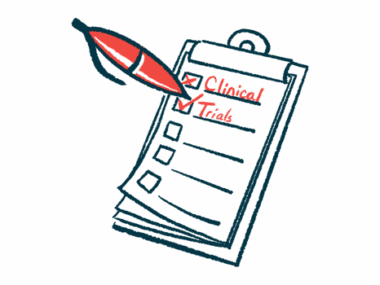Safety, efficacy seen for Sjögren’s therapy ianalumab in pair of trials
Novartis now planning to seek regulatory approval in global markets
Written by |

Novartis’ investigational antibody therapy ianalumab (VAY736) safely and effectively eases disease activity in adults with Sjögren’s disease, topline results from a pair of Phase 3 clinical trials show.
According to the therapy’s developer, ianalumab has the potential to become the first targeted treatment to be approved for people with Sjögren’s. The company said it is now planning to seek regulatory approval in global markets.
“Sjögren’s disease is a serious, progressive, systemic [body-wide] autoimmune disease, often unrecognized or misdiagnosed with a significant detrimental impact to quality of life, with very limited treatment options and an established unmet need,” Shreeram Aradhye, MD, president of development and chief medical officer at Novartis, said in a company press release detailing the findings of the two trials.
“These Phase [3] studies mark a significant milestone,” and “we look forward to engaging with health authorities to discuss these findings in the near future,” Aradhye added.
Novartis plans to present data from the Phase 3 trials — dubbed NEPTUNUS-1 (NCT05350072) and NEPTUNUS-2 (NCT05349214) — in a future medical meeting.
In Sjögren’s disease, the immune system mistakenly attacks the body’s healthy moisture-producing tissues, particularly the glands that make tears and saliva. These erroneous attacks are driven by self-reactive antibodies produced by abnormal immune B-cells.
There are no therapies specifically approved for treating the systemic manifestations of Sjögren’s, and disease management is focused on easing symptoms like dry eyes and mouth.
Ianalumab aims to ease disease severity among patients
Ianalumab is an antibody designed to target B-cells in two ways: It not only interrupts signaling of the B cell-activating factor receptor (BAFF-R) — a protein at the surface of B-cells that’s critical for their function and survival — but also marks the cells for immune-mediated destruction in a process called antibody-dependent cellular toxicity.
Ultimately, reductions in B-cells should lower production of Sjögren’s-causing self-reactive antibodies, thereby easing disease severity, according to its developer.
Ianalumab has been granted fast track designation for Sjögren’s in the U.S, a status intended to accelerate its clinical development and regulatory review.
Beyond Sjögren’s, Novartis is also developing the therapy for other B-cell-mediated autoimmune conditions, including immune thrombocytopenia, lupus, warm autoimmune hemolytic anemia, and diffuse cutaneous systemic sclerosis.
Data from a previous dose-finding Phase 2b clinical trial (NCT02962895) showed that ianalumab, given via under-the-skin (subcutaneous) injections, was well tolerated and significantly reduced disease activity among adults with moderate to severe Sjögren’s disease.
The global Phase 3 NEPTUNUS-1 and NEPTUNUS-2 studies were designed to further evaluate the safety and efficacy of subcutaneous ianalumab in adults with active Sjögren’s.
NEPTUNUS-1 enrolled about 275 patients who were randomly assigned to receive a once-monthly subcutaneous injection of either ianalumab (300 mg) or a placebo. In NEPTUNUS-2, more than 500 participants were randomly assigned to receive either 300 mg ianalumab once a month or once every three months, or a placebo.
The main goal of both studies was to evaluate whether ianalumab led to greater reductions in systemic disease activity than the placebo after about one year, as assessed by the validated European Alliance of Associations for Rheumatology Sjögren’s Syndrome Disease Activity Index.
Both trials met main goal of reducing disease activity
In both studies, ianalumab led to significant reductions in disease activity relative to the placebo, meeting that main goal. The treatment was also well tolerated with a favorable safety profile, according to Novartis.
After completing the main trial, participants in either study have the option to enter a long-term extension called NEPTUNUS-Ext (NCT05985915), in which all will receive ianalumab every month or every three months for three years. After that will be two more years of safety follow-up.
The positive trial data were welcomed by advocacy groups.
“This is an exciting and hopeful moment for the Sjögren’s community,” Janet Church, president and CEO of the Sjögren’s Foundation, said in a emailed statement to Sjögren’s Disease News.
Novartis’ announcement [of the positive trial results seen with ianalumab] marks meaningful progress toward the possibility of targeted therapies for Sjögren’s disease.
Church said Sjögren’s patients have relied “for far too long” on limited treatments that only provide temporary symptom relief.
“Novartis’ announcement marks meaningful progress toward the possibility of targeted therapies for Sjögren’s disease,” Church said. “It also reinforces the importance of continued investment in research that leads to better treatment options for patients.”
Toward that goal, the nonprofit earlier this month announced the launch of a new, nationwide, “Living with Sjögren’s” patient survey. A follow-up to a similar study done in 2021, this new effort is focused on collecting patient perspectives about life with the rare autoimmune disease. Its goal is inform research and advocacy efforts.
All adults in the U.S. who have been diagnosed with Sjögren’s by a medical professional can participate in the web-based survey. It takes about 20-25 minutes and must be completed by Sept. 4.







